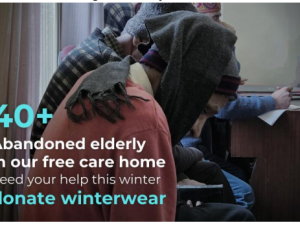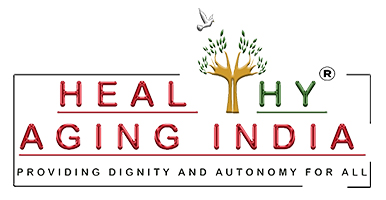Project Nai Roshni- An Initiative to Reach to Unreached Population
Problem Identification/Baseline Study
Menstruation is an intrinsic part of a woman’s life, and yet, for most women, it turns out to be a horrid recurring experience due to lack of access to basic resources like sanitary napkins. As per statistics revealed by the National Family Health Survey – 2015-16, only 36% of India’s menstruating women use napkins, while the rest lean on cloth, rags, husk or even ash to manage the flow. Nearly 23 million girls drop out of school annually after their period begins. The coronavirus outbreak further amplified the issue. In fact, when the Covid-19 lockdown was announced in March, sanitary napkins were not in the list of essential items, which were exempt from restrictions. Not only was there shortage of sanitary napkins, but it also put a stop to several existing distribution pads, thereby depriving women of safe and hygienic periods.
Amongst, 355 million menstruating women in India, which accounts for nearly 30 per cent of the country’s population, only 12% of India’s use sanitary napkins. The biggest barrier to using a sanitary napkin is affordability. Around 70% of women in India say their family can’t afford to buy them. This results in 88% women resorting to unhygienic practices during their menstrual cycle, such as filling up old socks with sand and tying them around waists to absorb menstrual blood, or taking up old pieces of cloth and using them to absorb blood. Such methods increase chances of infection and hinder the day-to-day task of a woman on her period. ICMR-Indian Council for Medical Research’s 2011-12 report stated that only 38 per cent menstruating girls in India spoke to their mothers about menstruation. Many mothers were themselves unaware what menstruation was and how it was to be explained to a teenager and what practices could be considered as menstrual hygiene management.
E-Surveys by the Ministry of Health in 2002, 2005, 2008 and 2012 found out that most problems related to menstrual hygiene in India are preventable, but not due to low awareness and poor menstrual hygiene management. This resulted in development of some serious ailments for adolescent girls. Roughly 120 million menstruating adolescents in India experience menstrual dysfunctions, affecting their normal daily chores. Nearly 60,000 cases of cervical cancer deaths are reported every year from India, two-third of which are due to poor menstrual hygiene. Other health problems associated with menstrual hygiene like anaemia, prolonged or short periods, infections of reproductive tracts, as well as psychological problems such as anxiety, embarrassment and shame.
Healthy Aging India has conducted a qualitative survey in the month of November in 8 slum clusters and nearing 900 girls and women of age group 14 to 45 years, from Delhi,NCR to understand few basic questions related to menstrual hygiene. The basic enquires were the product adolescent girls and menstruating women use during menstruation cycle in slum communities and whether it is affordable for them or not?
This study suggested that more than 50 percent adolescent girls/women use discarded fabric and also reuse it as they cannot afford other period products. Those who use sanitary napkin they have to spend at least around 5.5 rupees per napkin which is very difficult for most of them. The present study also reflects that due to Covid-19 outbreak adolescent girls/women facing financial crisis which ultimately affecting their capability to buy menstruation products. Adolescent girls also confessed during the interview that if they do not use good quality sanitary napkin it affects their learning ability in the classroom as they cannot concentrate on teaching-learning activities.
Methodology
- According to official website of Delhi Urban Shelter Improvement Board (DUSIB) there are about 675 big and small slum clusters in Delhi, which have at least 3.5 lakh families (20 lakh people) living in them.
- In the initial phase, we are selecting 150 Slum communities to implement project Nai Roshni and from each slum we are selecting 200 most needy and underprivileged adolescent girls and menstruating women. (total 30,000 beneficiaries). We will provide them best quality sanitary napkins for a year and will also sensitize them for maintaining hygiene during menstruation cycle.
- Preference will be given to those Adolescent Girls/Women who are not able to buy period products due to lack of financial assistance.
- We are choosing one to two insiders (community member) preferably elderly woman who have good understanding of the issue and also possesses excellent knowledge of the community. They will identify needy beneficiaries and help Healthy Aging India to reach them. This initiative will lead intergenerational bonding and purposefully engage elderly women
- We will also run Menstruation Van in Delhi from which people anyone in need of sanitary napkin could access it in affordable price through sanitary napkin vending machine. The other core objective behind running this Menstruating Van will be sensitizing general public regarding menstrual cycle and breaking associated taboo. Van will also distribute IEC material to sensitize general public on MHM.
Expected Outcome
- 30,000 underprivileged Adolescent girls/women living in 150 slum communities will be getting best quality sanitary napkin for a year
- General public will be sensitized on Menstruation Hygiene Management topic.
- Adolescent girls will not skip school in menstruation cycle time and will be able to focus in learning process, thus their academic result will be improved
- Perception of community members will be changed for menstruation phenomenon
- Disease like cervical cancer ,UTI will be prevented by this project
Monitoring
Healthy Aging India is developing an application for Smartphone users with the help of this application beneficiaries would be required to update when they get the sanitary napkins, they could also raise demand for sanitary napkins. This app will also contain IEC material and videos to sensitize beneficiaries to maintain good menstrual hygiene.
Conclusion
Through this project most needy and underprivileged population will be directly benefitted, this project will benefit beneficiaries in multiple ways like- it will restore their confidence, reduce absenteeism in school and enhance academic performance. It will also raise awareness in general public and break taboo associated with menstruation cycle.
Annex-I
Healthy Aging India is already working with 180 government upper-primary schools located in 8 aspirational districts (as per identified by Niti Aayag) of Uttar Pradesh through a developmental project namely “Celebrating girl child journey to womanhood Menstrual Hygiene Management” to address adolescence crisis, reduce drop-out rate and absenteeism of adolescent girls in 180 government schools in the 8 aspirational districts of Uttar Pradesh. More than 98 percent beneficiaries of this project come from Schedule Caste, Schedule Tribe and Other Backward Caste and Minorities. Objectives of Menstrual Hygiene Management project are to increase retention rate of adolescent girls in schools by sensitizing them on biological significance of menstrual health and hygiene practices, addressing myths-social taboos -discriminatory practices attached with menstruation, issues of adolescent crisis/puberty. Apart from sensitization of adolescent girls Healthy Aging India is also installing Sanitary Napkin Vending Machine and Electric Sanitary Napkin Incinerator in each identified school and regularly providing sanitary napkins. Throughout the implementation process we got excellent response/feedback from district and school administration, adolescent girls and communities associated with each school. MHM project is bringing positive change in lives of thousands of adolescent girls living in remotest part of Uttar Pradesh. Mid-term evaluation of the project suggests that attendance rate of adolescent girls has been improved by 95 percent after MHM project and girls pay better focus and attention in classroom during menstruation cycle.
Healthy Aging India is implementing Menstrual Hygiene Management project in remotest and difficult area of Uttar Pradesh, in these locations people’s sensitization level on MHM is almost zero, initially we faced so many issues and problems in implementation of the project, even educated teachers did not allow us to implement project on MHM, according to them one should not talk about menstruation openly and almost in each school we met at least a male teacher who was firm believer of notion that Menstruation is only women’s phenonomena and only women should be talked regarding it, they did not become part of sensitization sessions and asked us to take it in only room and gates of room should not be opened in between the sensitization session. Despite lots of challenges Healthy Aging India is implementing MHM project in right direction and changing people’s perception regarding MHM. A large number of rural adolescent girls are being directly benefited to our existing MHM project.
In most of the part of India, Adolescent Girls do not have access of sanitary napkins and they use old piece cloth as most of the girls come from underprivileged families and cannot afford to buy napkins, it is not only about incapability to buy sanitary napkins but taboos and misconceptions are also associated with menstruation cycle, sanitary napkin is not available at every location, Adolescent Girls are not sensitized enough to use it so on and so forth and there are girls who do not even know to use sanitary napkin therefore they use cloth nor they have anyone who can guide them to use it. Adolescent girls do not come to school during their menstruation cycle and when they were asked why they do not come to school, girl confessed that their body smell in menstruation time and they also feel uneasy that is why they do not come to school. There is nobody in adolescent girl’s life who can teach them about menstrual hygiene management and condition become more pathetic when their parents are also not sensitize and spread taboos related to menstruation cycle but it is not their fault because it is going on for generations
Donate for the Nai Raushni Campaign
-
 Donate winter clothes
Rated 0 out of 5₹2,500.00
Donate winter clothes
Rated 0 out of 5₹2,500.00


